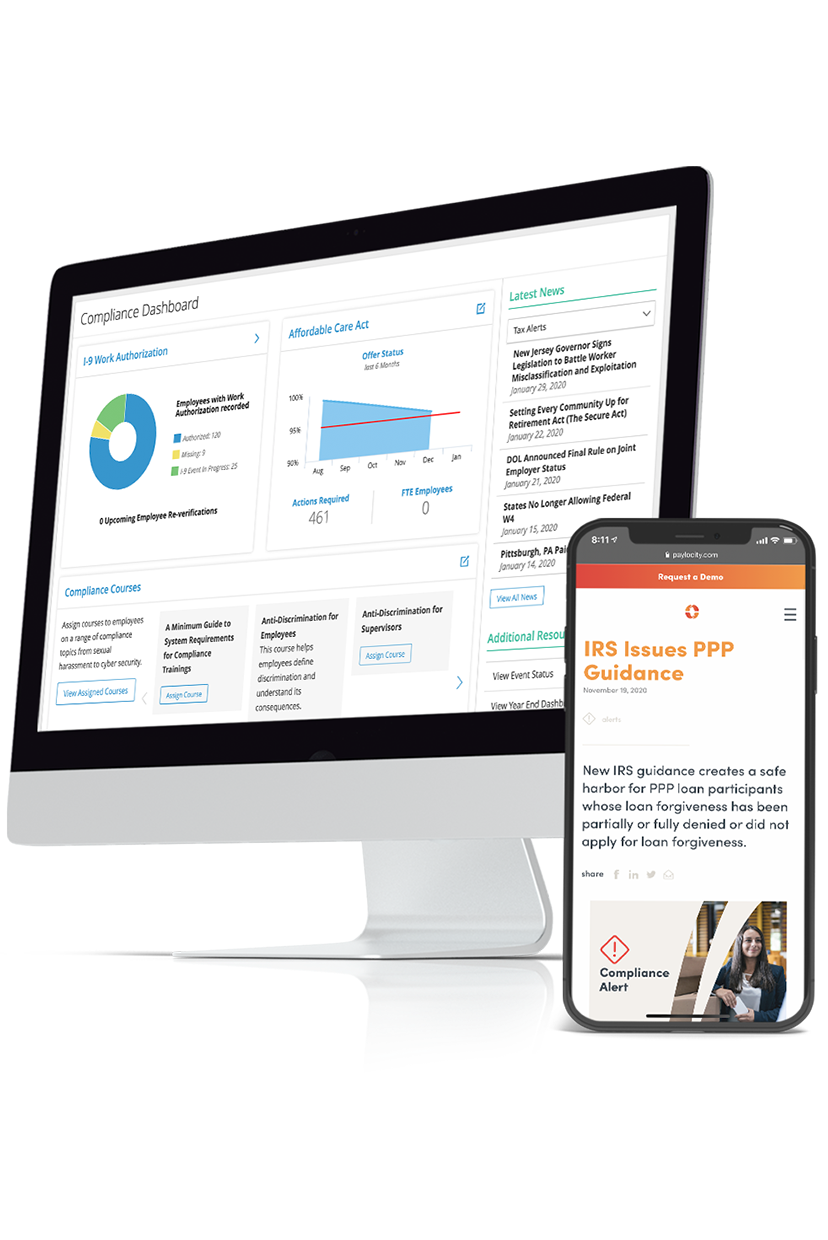resources
Minnesota Earned Sick and Safe Leave Update
June 07, 2024
Explore the state's new amendments to its ESSL law, effective May 24, 2024.

At a Glance
Effective May 24, 2024, amendments to the state's Earned Sick and Safe Leave (ESSL) provisions include:
- Amends earning statement provisions (or requirements)
- Updated employee eligibility hours requirements
- Updated rate of pay requirement
- Expanded acceptable uses
Introduction
On May 21, 2024, Governor Tim Walz signed the HF 5247 (Article 11) which includes amendments to the state's ESSL provisions that became effective on May 24, 2024.
Eligibility
- Employer Applicability: ESSL applies to any individual or business with one or more employees (i.e., there's no small employer exemption).
- Employee Applicability: ESSL applies to all employees, including part-time and temporary employees, who the employer anticipates performing work within the state of Minnesota for at least 80 hours in a year.
Accrual
Employees may use ESSL as it's accrued (one hour for every 30 hours worked) and may accrue up to 48 hours of ESSL in the 12-month benefit period. The benefit period may be calendar year, employee anniversary, or some other annual date selected by the employer. Employees may carry over any accrued, unused ESSL into the new 12-month benefit period, but employers may cap the amount of accrued leave to 80 hours.
Employers may also frontload ESSL at the beginning of a 12-month benefit period via one of the following methods:
- Granting 48 hours at the beginning of the year if the employer pays out accrued but unused ESSL at the end of the 12-month benefit period at the employee's base rate
- Granting 80 hours at the beginning of the year if the employer doesn't pay out accrued and unused ESSL at the end of the12-month benefit period
Employers are allowed to be more generous than the requirements listed above.
Acceptable Uses
Eligible employees may take ESSL for the following reasons:
- For the employee’s mental or physical illness, injury, or other health condition; need for medical diagnosis, care, or treatment of a mental or physical illness, injury, or health condition; or need for preventive medical or health care.
- The need to make arrangements for or attend funeral services or a memorial or address financial or legal matters that arise after the death of a family member.
- To care for a family member with a mental or physical illness, injury, or other health condition; who needs medical diagnosis, care, or treatment of a mental or physical illness, injury, or other health condition; or who needs preventive medical or health care.
- For absence due to domestic abuse, sexual assault, or stalking of the employee or the employee’s family member; to seek medical attention related to physical or psychological injury or disability cause by domestic abuse, sexual assault, or stalking; obtain services from a victim services organization; obtain psychological or other counseling; seek relocation or take steps to secure an existing home due to domestic abuse, sexual assault, or stalking; or seek legal advice to take legal action, including preparing for or participating in any civil or criminal legal proceeding related to or resulting from domestic abuse, sexual assault, or stalking.
- For closure of the employee’s place of business due to weather, public emergency, or the need to care for a family member whose school or place of care has been closed due to weather or public emergency.
- Due to the employee being unable to work or telework because the employer prohibits them from going to work due to health concerns related to the potential transmission of a communicable illness related to a public emergency; because the employee is seeking or awaiting results of a diagnostic test for or medical diagnosis of a communicable disease related to a public emergency when the employee has been exposed to the communicable disease or the employer has requested the test or diagnosis.
- Because health authorities or a health care professional said the presence of the employee or family member in the community would jeopardize the health of others due to exposure to a communicable disease, whether or not the employee or family member has actually contracted the disease.
Additionally, a "family member" is defined as:
- Child, foster child, adult child, legal ward, child for whom the employee is the legal guardian, or child to whom the employee stands or stood in loco parentis;
- Spouse or registered domestic partner;
- Sibling, stepsibling, or foster sibling;
- Biological, adoptive, or foster parent, stepparent, or a person who stood in loco parentis when the employee was a minor child;
- Grandchild, foster grandchild, or step grandchild;
- Grandparent or step grandparent;
- Sibling’s child;
- Parent’s sibling;
- Child-in-law or sibling-in-law;
- Family members of a spouse or registered partner;
- Other individuals related by blood or whose close association with the employee is equivalent to a family relationship; and
- Up to one individual annually designated by the employee.
Pay and Benefits
The amendments to the ESSL law require employers to pay ESSL at a rate equivalent to the “base rate.” For employees paid an hourly rate, the “base rate” is the hourly rate the employee would've earned had the employee worked instead of taking ESSL. This base rate doesn't include:
- Commissions
- Shift differentials that are in addition to an hourly rate
- Premium payments for overtime work
- Premium payments for work on Saturdays, Sundays, holidays, or scheduled days off
- Bonuses or gratuities
For non-exempt employees who are paid an annual salary, the base rate is the same rate guaranteed to the employee had they not taken ESSL. For employees who are paid entirely by commission, piecework, or any basis other than an hourly or salary rate, the rate must be no less than the applicable local, state, or federal minimum wage, whichever is greater.
During any use of ESSL, the employer must maintain coverage under any group insurance policy, group subscriber contract, or health care plan for the employee and any dependents, as if the employee was not using ESSL, provided, however, the employee must continue to pay any employee share of the cost of such benefits.
Notice and Recordkeeping
Employers must give notice to all employees regarding ESSL rights, including the amount of ESSL, the accrual year, the terms of use, requirements for providing notice of use, and prohibition of retaliation. This information must be provided in English and in the employee’s primary language on January 1, 2024, or at the commencement of employment (in addition to the new hire notice), whichever is later.
If an employer provides an employee handbook to its employees, it must include notice of employee rights and remedies regarding ESSL. The Minnesota Department of Labor will provide an employee notice form.
The amendments removed the requirement that employers list an employee’s ESSL balance on their earnings statements. Instead, employers may choose a reasonable system for providing this information, including listing information on or attached to each earnings statement or an electronic system where employees can access it. An employer who chooses to provide this information electronically must provide employee access to an employer-owned computer during an employee's regular working hours to review and print the information.
Local and Current Policies
ESSL requirements don't preempt local laws from providing paid sick and safe leave requirements so long as they're equal to or more generous than the state law. If a city and state law conflict, the employer must provide the more generous benefits.
If an employer already has an existing paid sick and safe time policy under a paid time off policy that is equal to or more generous than Minnesota law, the employer doesn't need to provide additional time off.
Note, an employer's current policy must satisfy all the requirements of this law.
Next Steps
Employers should review their current policies and practices to ensure compliance.
Thank you for choosing Paylocity as your Payroll Tax and HCM partner. This information is provided as a courtesy, may change, and isn't intended as legal or tax guidance. Employers with questions or concerns outside the scope of a Payroll Service Provider are encouraged to seek the advice of a qualified CPA, Tax Attorney, or Advisor.

Keep Up With Compliance
Between constantly changing employment laws and updates to the Affordable Care Act (ACA), keeping your workplace compliant can be a time-consuming and costly challenge. Eliminate the stress and stay up to date with our Compliance Dashboard. View compliance alerts and get a bird’s eye view of what you need to do to avoid fines and penalties.

